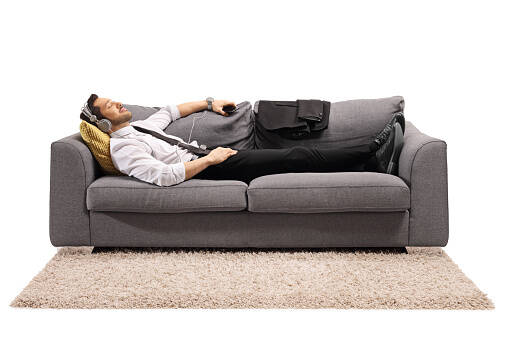- psychologicka-poradna.sk - advice on the autogenic training method
- dusevnezdravie.sk - article about autogenic training, author of the text Prof. MUDr. Jozef Hašto, PhD., psychiatrist and psychotherapist
- Literature.
Autogenic training. What is it and how does it work?

Different physical pains and psychological problems belong to humans somehow automatically. We always try to solve them with some guaranteed method. How can autogenic training help us in this respect?
Article content
A hectic and stressful way of life causes us various mental and physical problems.
Autogenic training can help us overcome and even prevent them.
It is used in therapy and prevention.
What is autogenic training?
It is a psychotherapeutic method developed by the German neurologist and psychotherapist Johannes Heinrich Schultz.
It is, of course, named after him and you may also come across it under the name Schultz Autogenic Training.
It is a system of working with your own inner imagery. With their help, we get into a relaxation of body and mind.
It starts from the basic level, which serves as a starting point for meditation exercises.
It is used in the treatment of psychological and psychosomatic disorders whose origin is conditioned by experience.
As a preventive measure, it counteracts excessive stress.
It helps to develop hidden potential and resilience.
Therefore, autogenic training means 'self-creating systematic exercise'.
Does it have anything to do with yoga?
If we want to know something about autogenic training, let's compare it with yoga right at the beginning.
The founder himself, Dr. Schultz, emphasized a certain parallel between his method and the philosophy of yoga.
The common ground between the two lies in controlling one's subconscious. Finding the path to it and calming the autonomic nervous system.
Unlike yoga, however, Schultz's autogenic training is a practical rather than a spiritual path.
Read more in the article:
In what situations does autogenic training help us?
What is its essence?
How is it done?
When can autogenic training help us?
This method of relaxation exercises acts as both therapy and prevention. That is, it both cures and helps prevent problems.
This exercise is not limited to people with problems.
Even age limits are not set. The exercises can be done from childhood.
Autogenic training can be done as early as 8 years of age.
It is mainly used for:
- treatment of chronic pain
- improving concentration
- regeneration of the body
- release of physical and psychological tension
- improving the quality of sleep
- gaining a sense of psychological balance
- elimination of obsessions, habits and addictions
- improving self-control
- self-improvement and self-knowledge
- increasing physical performance

Read also how to get rid of stress in the summer months.
Autogenic training helps to eliminate anxiety, fear, various phobias, insomnia, headaches and migraines, fears, aggression, psychosomatic disorders or panic and much more.
It even helps people who have difficulty connecting with other people.
Its use is simply wide.
The essence of autogenic training
Autogenic training is an autosuggestive psychotherapeutic method applicable in therapy and prevention.
It has an anti-stress effect.
Its essence lies in the training and repetition of certain physiological states. These are usually associated with great physical relaxation.
Everything depends on the interaction between the body and the mind. Just as our mental state influences our physiological processes, the connection is also reversed. This means that a change in our physiological state causes us to feel certain sensations.
With the relaxation of the body, we also achieve relaxation of the mind.
From a professional point of view, or precisely for this reason, the presence of an experienced psychotherapist is necessary.
It is desirable that he be trained or experienced in this method.
The above-mentioned Dr. Schultz, the founder of this method, found the following fact.
States of deep relaxation tend to be associated with feelings of psychological relaxation. The feeling of calming produces a sensation of a pleasantly heavy, pulsating and warm body. A feeling of insomnia and a kind of anchoring of our mind in infinite time and space.
All this is caused by the relaxation of the skeletal muscles, the blood circulation of the skin and the slowing of the pulse and breath.
You might be interested in this article about how long sleep is necessary.
How to perform autogenic training?
First and foremost, you need to understand the goal of autogenic training.
The goal is clear: to gain the ability to induce a state of deep relaxation through frequent and regular repetition.
We follow the instructions of the therapist. He guides us through systematic mental exercises.
The entire training cycle usually lasts 6 to 12 weeks. During this period we practice 2 to 3 times a day.
However, one exercise does not last longer than 5 minutes. Gradually, the time can be extended up to 15 minutes.
Its regular repetition calms a person down, increases his performance and at the same time removes some neurotic symptoms.
We usually meet with the therapist at weekly intervals, otherwise we practice independently.

The ability to induce states of relaxation is formed by reciting the given formulas. However, we do not do this verbally, but only in the mind.
In the first exercises, the formulas focus on gravity and calming. After a week, we focus on heat, pulse, breathing and heat in the abdomen. In the last stages of the training process, the formulas focus on the head.
In meetings with the psychotherapist there is an opportunity to address any problems and progress to other formulas.
To relax the muscles properly and smoothly, it is important to learn the correct body position during the exercises.
Therefore, at the beginning of the exercises the therapist accompanies us. We have to learn to work with ourselves. Then, also because of the frequency of the exercises, we have to work independently.
Relaxing music during exercise is a good help to relax better. There are various recordings and videos of autogenic training available on the internet for home use.
The basis of the exercise is to focus on different body parts and mental states by reciting formulas. Relaxation is achieved in different body organs and parts. It is combined with focusing on one's own feelings.
In the following table we list six focuses of autogenic training
| Training focus | Training procedure |
| Weight training | We visualize gravity in our body. Starting in the dominant hand, we progress to the other hand, the lower limbs, and gradually to the whole body. |
| Heat Exercise | We create an image of heat. We proceed as in the previous exercise with mental focus on relaxing the peripheral blood vessels. |
| Regulation of the pulse | We try to focus on the calm activity of our heart and learn to perceive its steady beat. |
| Calming the breathing | We focus on our own breathing, its calmness. |
| Warmth in the abdomen | We focus our thoughts on the evocation and flow of heat to the abdomen and abdominal organs. |
| Head | We focus our thoughts on the sensation of a pleasant coolness in the body area. |
Through regular practice and repetition of these states, our ability to regulate our bodily processes increases.
Once the basic level of autogenic training has been mastered, therapists recommend continuing to practice on your own for at least 3 months. After that, it can be used as needed or at your own discretion.
Autogenic training actually has no side effects. It can be combined well with other psychotherapeutic methods.
Even healthy people can benefit from such therapy and improve their quality of life.
You can also learn more about depression and anxiety in our magazine article.
Interesting resources
Related










